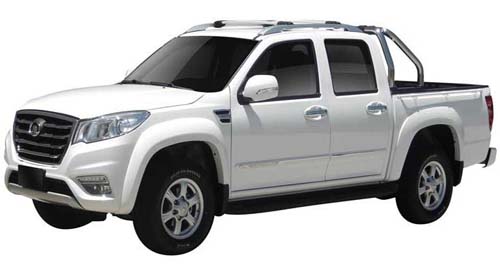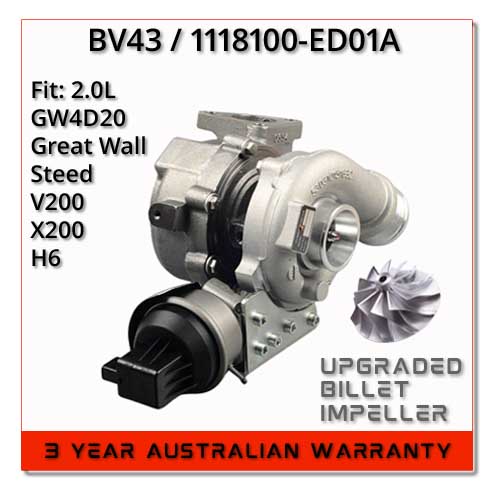Great Wall Turbo Problems Steed V200 X200
The Great Wall Steed, V200, X200 Vehicles.
Great Wall GWM vehicles are priced as budget products in the Australian market.
The Great Wall Steed and V200 (V-series) Utility platform, and X200 SUV are produced in Baoding, China.
And in China, GWM ranks in the top 10 of popular brands.

With entry price at the lower end of the market here, there is no shortage of complaints about quality and service.
But when you combine the entry cost and total cost of ownership (TOC), the affordability factor is compelling.
So purchasing a Great Wall vehicle is a trade-off between cost, quality and safety.
And that is, if you are happy to put up with a low ANCAP safety rating, and market resale depreciation.
Not surprisingly, compared to other SUV’s and Ute’s in their class, the performance is at the bottom end as well.
So a common complaint from drivers of these series, is slow acceleration with a distinct turbo lag.
The diesel engine lacks power until over 2,500rpm, then accelerates sufficiently (depending on load).
The power plant of the Steed, V200 and X200 is the Chinese-developed, double overhead cam Euro 4 standard, GW4D20 2.0L Turbo Diesel.
Coupled with a Nissan 1118100-ed01a (Borg Warner: 53039880168 / 53039700168) VGT Turbocharger.
And the turbo engine combination produces 110kW of power at 4000rpm.
With torque peaking at 310Nm between 1800-2800rpm.
And like all turbo vehicles, the GW4D20 diesel can develop turbo problems.
Do you have Great Wall Turbo Problems: Steed V200 X200?
Reading this article on Great Wall Turbo Problems, you may have experienced:
In your Great wall v200 x200 Steed a loss of power (beyond normal operational power).
And you may have the engine check light illuminated on the dash panel.
If the ECU believes the problem is serious enough, you may have experienced “limp mode”.
Whereby the ECU protects the engine and sub-components from further damage, by disabling excessive engine power.
If so, the first check would be the Turbocharger Actuator Position Sensor and Boost Control Solenoid.
The Great Wall Turbocharger has a vacuum-actuated VNT (variable vane) assembly, with an actuator position sensor at the end of the actuator vacuum bulb.
So there are 2 components to check here.
Have the controller and position sensor itself checked, and the wiring circuits (including fuse) tested.
Vacuum hoses and fittings should be checked for vacuum leaks.
The second thing to check would be the EGR (Exhaust Gas Re-circulation) Valve.
As the GW4D20 Diesel conforms to Euro4 emission standards, the fitted EGR valve recirculates some of the exhaust gasses for re-burning.
Electrical faults in the EGR Valve, or a blocked and jammed EGR Valve, vary the output of engine power.
If you are unfortunate to not catch this problem early, the turbocharger may have suffered damage.
So if the above does not solve the problem, we recommend the turbocharger be replaced.
And installing a new turbocharger is the ideal time to get the manifold cleaned and the EGR valve checked and cleaned.
We also recommend installing a Catch Can in diesels, to improve performance by reducing re-circulation of oil-laden gasses.
For more information on what the mechanic should do at install see: Best Practice Steps for Turbocharger Installation.
How to Prevent Great Wall Turbo Problems in your Steed V200 X200.
Many trade utility and family SUV vehicles, are used exclusively for city driving.
And constant low speed (low rev) driving contributes to carbon will build up, in diesel engine components.
Excessive carbon deposits form in the exhaust system.
Deposits form in the engine exhaust manifold, the turbocharger turbine housing (and the VNT assembly), the EGR Valve, and into the DPF(Diesel Particulate Filter).
So on occasion, allow the engine to rev up higher in 2nd and 3rd gear.
And also remember to give your vehicle a decent run on the motorway, to help burn out some of the carbon deposits.
What if your Great Wall Steed V200 X200 Turbocharger needs replacing?
If no fault is found in the Turbocharger Boost or actuator position solenoid, or the EGR valve, the turbocharger may have faulted.
Diesel turbocharger faults are commonly due to seized vanes in the VNT assembly.
Secondly, from excess wear of internal components such as bearings and shaft, due to ageing or skipped oil / filter servicing.
Have the turbocharger replaced and keep to a strict servicing schedule.
If most of your driving is at low city speeds, keep in mind the need to burn off excess carbon build up in the exhaust system.
Replacing your Great Wall Steed, X200 and V200 Turbocharger is extremely affordable.
We stock quality after market Billet Upgrade Turbochargers for Great Wall Steed, X200 and V200.
Our turbochargers have TRIPLE the warranty of original (OEM) turbochargers, with our Exclusive 36 Month Warranty, at less than half the price.
And we supply a free installation Gasket Kit, plus Free shipping Australia-wide.
If you have any other query on replacing your Great Wall Turbocharger, please contact our sales support on: 0490 059 316.
